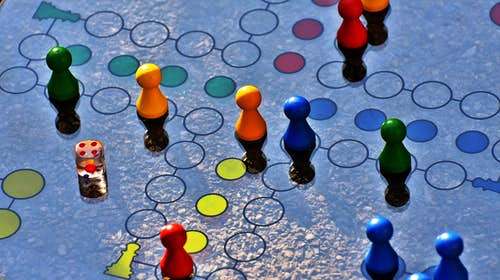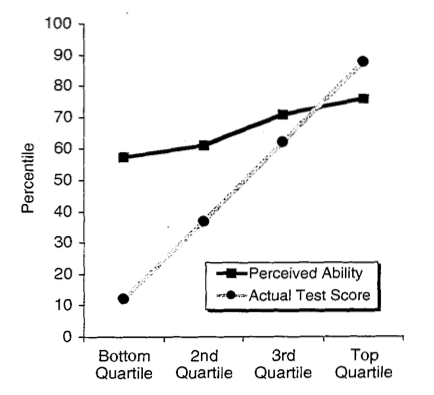“The first rule of the Dunning-Kruger club is that you don’t know you are in the Dunning-Kruger club”. We are all in it, says David Dunning as he explains the Dunning-Kruger effect that people of low ability tend to overestimate their abilities.
Here’s the classic graph, courtesy of the Journal of Personality and Social Psychology.
What does it mean for owner-managers?
Simply that when we are new to the task or have limited experience, we tend to overestimate our abilities. As we do not experience a stable environment in business for long, we are often in new environments where we have new tasks or limited experience. Consequently, we tend to operate on the assumption that we know more about the task than we actually do. And that has consequences for our decision-making and results.
Entrepreneurial hubris
We’ve mentioned before that entrepreneurs are naturally optimistic people. It’s a necessary characteristic. But like all swords, this is a double-edged one. We need the optimism to be able to start new things, and push through barriers to reach our goals. However, optimism has to be tempered with some realism, and the Dunning-Kruger effect suggests that our view of realism may be overblown.
Consequential decisions
There are many instances where we have adequate experience and information. This is generally when we are doing something with which we have experience, or where there are reasonable connections between our decision and our existing situation.
But consequential decisions are ones where we have new tasks to explore. These are the big decisions in our life and our business. Shall we start up in another town, shall we change our product line, shall we explore new markets? It’s the equivalent of moving house, deciding to have children, or marry. Whilst we can imagine the benefits, we can’t really imagine the reality because we’ve never experienced it.
It is these decisions that particularly need more care and the realisation that we may well overestimate our abilities.
Decision-making techniques
There are ways of dealing with this issue. These revolve around three separate areas:
a) facts or opinions
b) probabilities or certainties and
c) questions.
Facts or opinions
You need to separate one from the other. Most beliefs we have are opinions, not facts. Facts can be checked, and simply saying I know this is true does not make it so. Quite often when we are asked in surveys about what we know to be true or not, people will always choose something, rather than saying “I don’t know” which is often the truthful answer to the question. Saying “I don’t know” allows you to explore rather than decide too quickly. In many cases “I don’t know” is a very useful solution.
Probabilities or certainties
The confidence that entrepreneurs often feel leads them to describe future events as certainties when they are no such thing. Whilst it’s helpful to have that drive and commitment, it is also helpful to recognise that what they are describing are probabilities – likelihoods of success. Assigning percentages to these events is a useful way of describing what you think might happen. It’s also useful to remember that probabilities, if they are stacked, change their meaning. Simply do the maths – if you are 80% certain that you will sell 100 new items but it is dependent upon same day delivery, a price point of £5, and 50 new customers, all of which are also 80% certain, then the overall chance of success is not 80% but just over 40% (0.8 x 0.8 x 0.8 x 0.8) – you have to multiply all the probabilities together. It tends to change your thinking when you do this!
Questions and naïve realism
Ask yourself, do I really know? Ask yourself, what could go wrong, and could you live with the consequences? Ask other people and question why they think the way they do. Their context will be different, and they should be able to provide you with a more rounded perspective. In particular, ask people who have different views than yours. Don’t ask people with exactly the same experience and knowledge as they are just going to agree with you, which will not help, and it might encourage you to do the wrong thing. You need a critical friend, not just a friend.
Finally, test your decision in a small way. Only jump in when you know the depth and temperature of the water. And ask yourself, where are you really on that graph!

